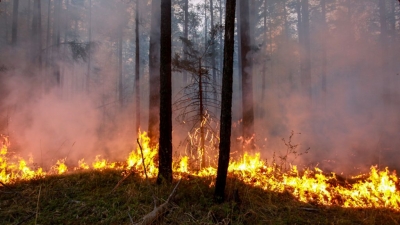
In 2019, the Arctic region experienced “unprecedented” Wildfires, which scientists say have been facilitated by high temperatures. The Copernicus Atmosphere Monitoring Service has tracked more than 100 intense wildfires in the Arctic Circle since June, 2019.
Temperatures in the Arctic are rising at a faster rate than the global average, providing the right conditions for wildfires to spread.
Wildfires also release carbon dioxide into the atmosphere, contributing to global warming. For instance, the 2014 megafires in Canada scorched more than 7 million acres of forest, releasing more than 103 million tonnes of carbon into the atmosphere – half as much as all the plants and trees in Canada typically absorb in an entire year, according to a study by NASA.
The pristine Arctic environment is particularly sensitive/fragile and warming faster than most other regions. Particles of smoke can land on snow and ice, causing the ice to absorb sunlight that it would otherwise reflect, and thereby accelerating the warming in the Arctic. Fires in the Arctic also increase the risk of further permafrost thawing that releases methane, which is also a greenhouse gas.
Picture Credit : Google



